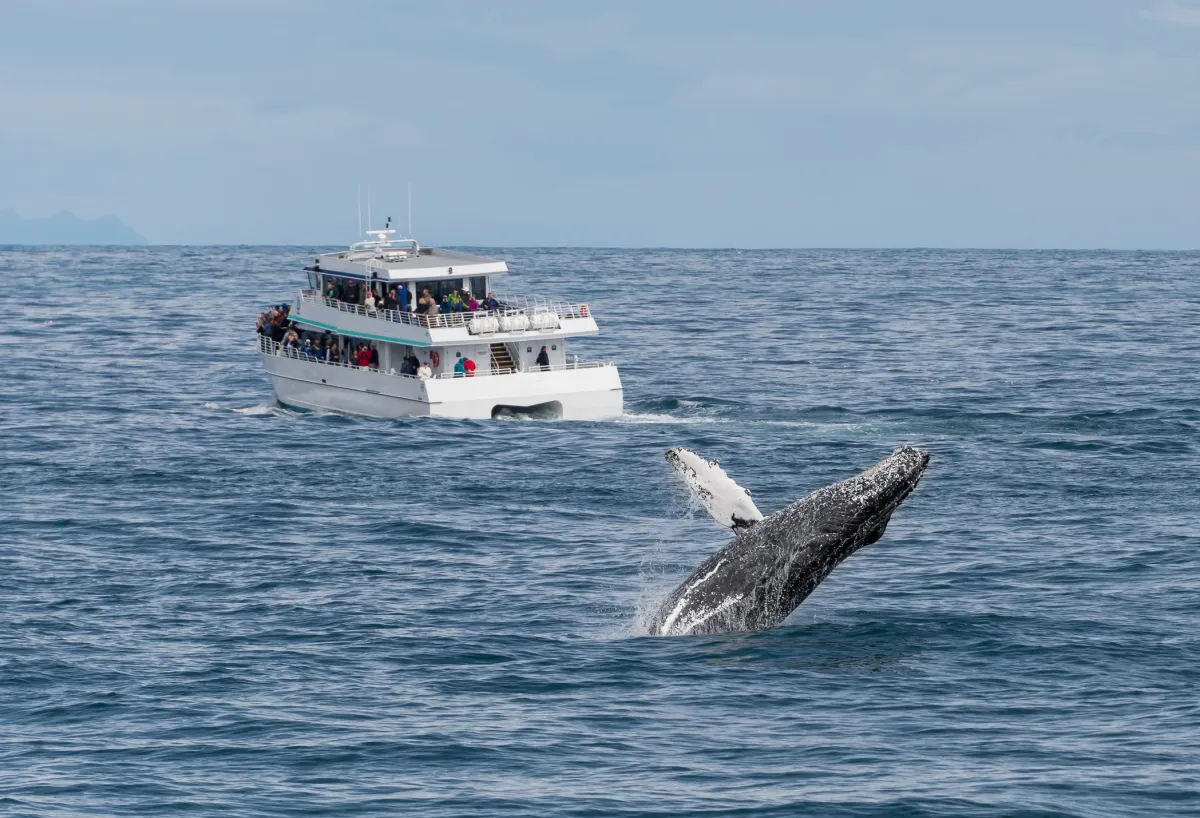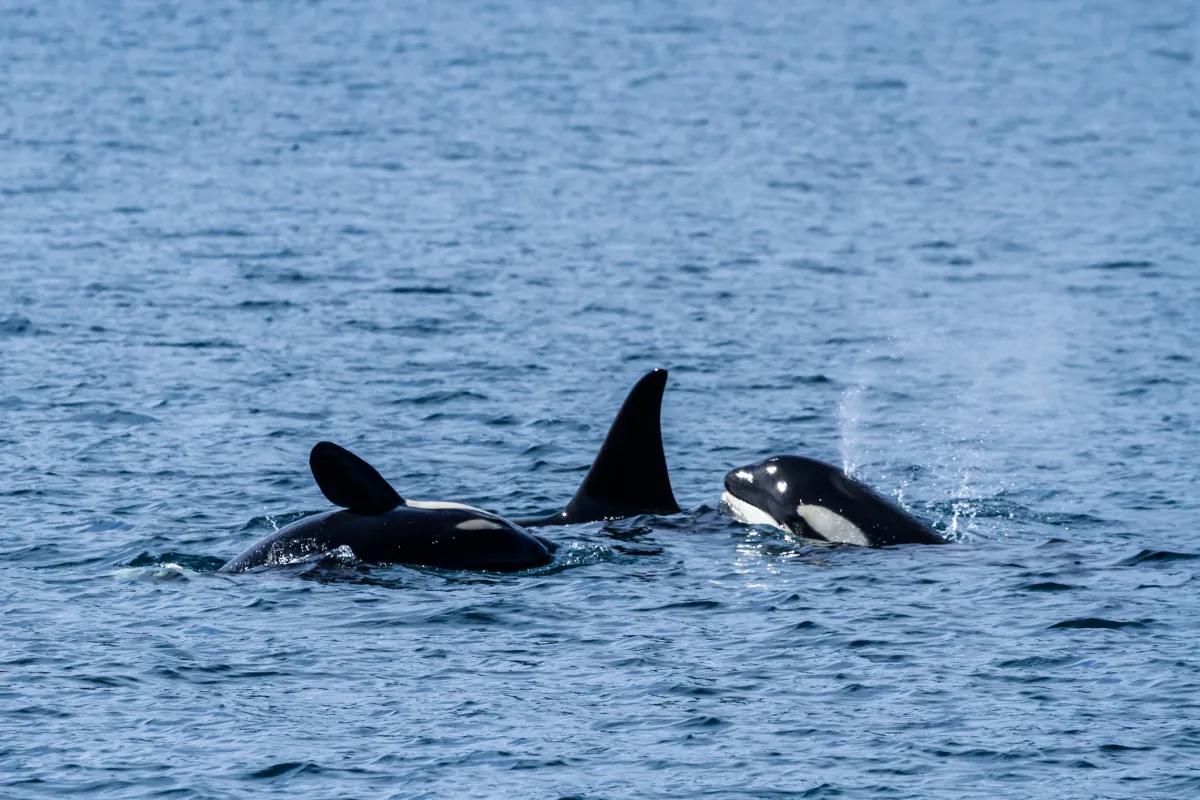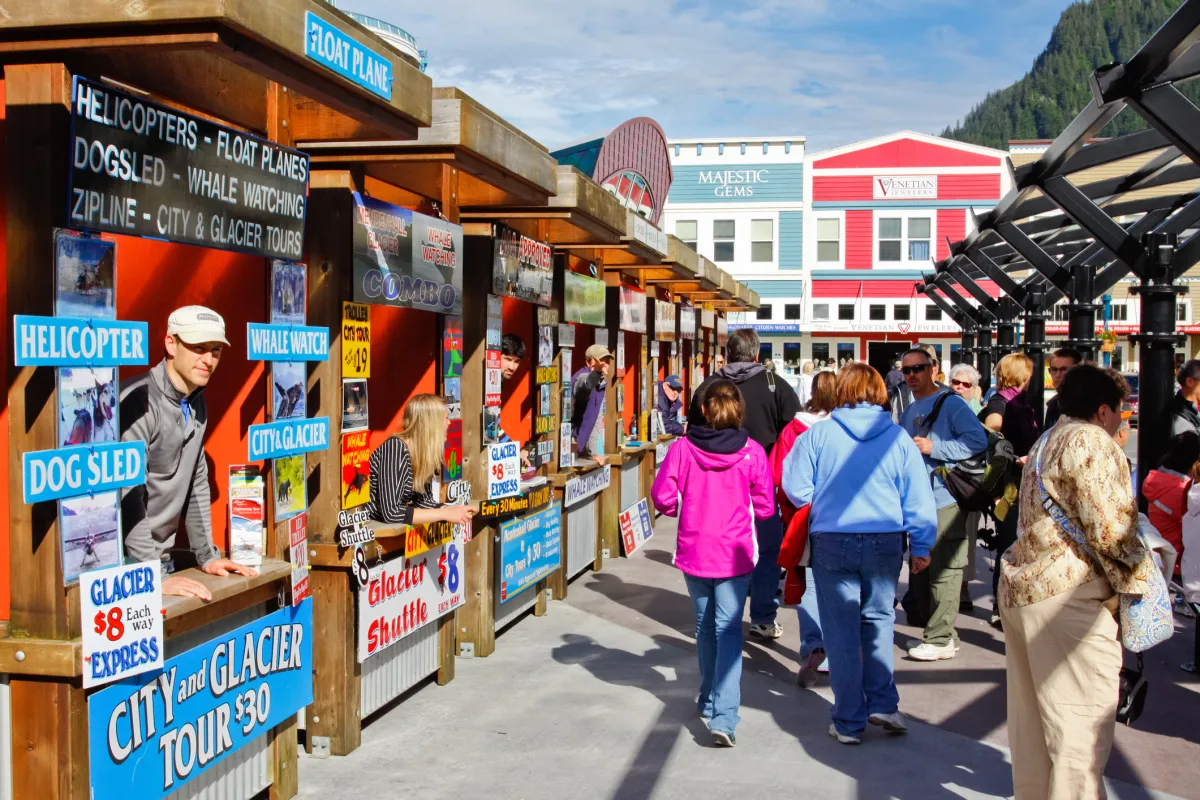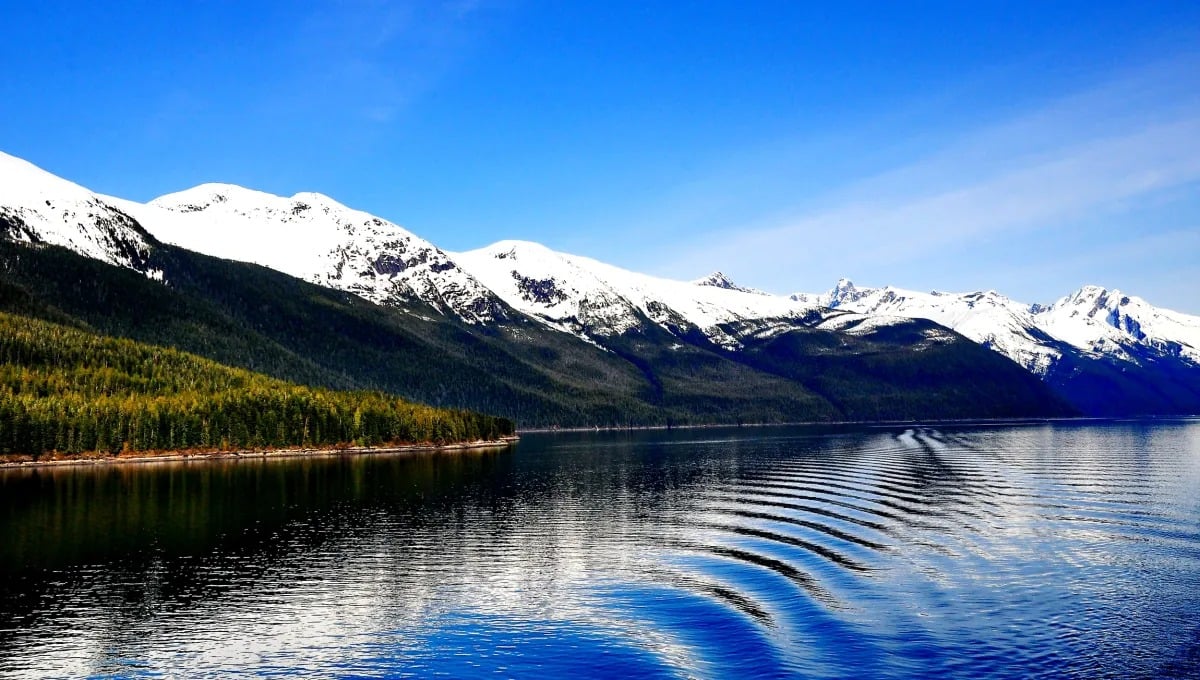
With coastlines stretching over thousands of miles and a marine ecosystem teeming with life, Alaska is a dream destination for those eager to experience the thrill of whale watching. Throughout the summer, whales and orcas migrate to Alaska’s cold waters to feed. But with so much ocean and coastline to cover, it can be daunting to know where (and when) to go for your whale watching adventure.
From the powerful breach of a humpback to the playful dives of orcas, here's your guide on where (and when) to catch the show of a lifetime!
Best Time of Year for Whale Watching in Alaska

May to September: Summer is the prime whale-watching season in Alaska. During the summer months, nutrient-rich waters draw various whale species closer to the coast, offering excellent viewing opportunities.
If you're visiting Alaska specifically for whale watching, mid-June to mid-July tends to be particularly abundant due to the peak of many whales' migratory patterns and the typically calmer weather.
Types of Whales in Alaska

Alaska is home to an abundant variety of marine mammals. Many of these mammals, such as orcas, sea lions, seals, and otters, live year round in Alaskan waters, while others, such as larger whales, migrate here in the summer months.
The most commonly seen whales on an Alaskan whale watch tour include:
- Humpback Whales: Alaska's coastal waters play host to around 10,000 humpback whales that migrate from their breeding grounds in Hawaii during the colder months. They range up to 60 feet in length and can weigh up to 40 tons.
- Gray Whales: In the spring, thousands of gray whales travel an impressive 11,000-mile round trip from their breeding areas in Baja California to their feeding zones in the Arctic. About the size of a school bus, they are often spotted along Alaska’s outer coastlines near the Kenai and Kodiak coastline.
- Fin Whales: Among the more streamlined of the whale species, fin whales are also one of the fastest, capable of reaching speeds up to 23 mph. These impressive creatures, second in size only to the blue whale, have a distinctive V-shaped head and a tall, sickle-shaped dorsal fin. While rare, they are sometimes spotted on whale tours.
- Killer Whales (Orcas): Often considered the ocean's smartest predators, orcas can be spotted throughout Alaska's bays and inlets year-round. They are also one of the most active species spotted during tours, often jumping in the air or actively hunting seals.
- Beluga Whales: While not typically seen on whale tours, the white beluga whale can be spotted in the Cook Inlet during the summer. Spotting this incredibly rare, arctic-dweller is a definite treat if you plan on driving the Seward Highway.
- Other Marine Cetaceans: Beyond whales, Alaskan waters are teeming with other amazing cetacean species. Dall’s porpoises, with their striking black-and-white patterns, are often seen frolicking alongside moving boats, riding the bow waves. Also keep an eye out for minke whales, Pacific white-sided dolphins, and the more reserved harbor porpoises.
Best Places for Whale Watching in Alaska

Juneau
Best for: Humpback Whales, Orcas
Juneau is not only Alaska's capital but also a hub for whale enthusiasts. Here, the humpback whales are known to showcase their unique bubble-net feeding during the early summer months.

Seward
Best for: Orcas, Gray Whales, Minke Whales, Humpbacks, and Puffins
Nestled on the Kenai Peninsula, Seward boasts a combination of dramatic fjords and a vibrant marine habitat. While chasing whales, you're also likely to spot seals, sea lions, and diverse seabirds, and also take a sightseeing tour through the beautiful Kenai Fjord National Park.
Kodiak
Best for: Gray Whales, Fin Whales, Minke Whales, and Orcas
The marine ecosystem around Kodiak Island is unmatched. Come spring, gray whales grace these waters, journeying from Baja California. You can often spot whales from the shoreline, though there are a handful of small charters that are available to take you out closer.

Glacier Bay National Park
Best for: Humpbacks, Minke Whales
Glacier Bay, with its towering glaciers and tranquil waters, offers an ethereal setting to observe humpbacks in their glacial surroundings. This is the best tour for those interested in snapping a shot of a humpback breaching with a dramatic glacier landscape in the background.

Sitka
Best for: Humpback Whales, Gray Whales
The waters around Sitka teem with life, making it a top spot for spotting humpbacks, particularly as they feed on krill and small fish. This is also a favorite spot to observe bubble-net feeding from the docks, as the Sitka harbor is deep enough for humpback whales.
Ketchikan
Best for: Orcas, Humpback Whales
Ketchikan’s location in the Inside Passage, coupled with its rich marine environment, attracts both orcas and humpbacks, offering consistent viewing opportunities. Similar to Sitka, this is also a top place to see bubble-net feeding in a marina – one of the few places in the world where you can observe this behavior from the shoreline.
Whittier
Best for: Gray Whales, Orcas
Tucked into a scenic corner of the Kenai Peninsula, Whittier is a gateway to bountiful waters where orcas often steal the show. If you’re looking to save time, opt for the ferry ride from Whittier to Valdez instead. You will often spot whales along the way, and you get to add another beautiful destination on your itinerary.
Valdez
Best for: Orcas, Humpback Whales, Minke Whales, Gray Whales
Valdez, with its deep-water fjords, attracts a rich tapestry of marine life, including orcas and humpbacks, making it a less frequented but rewarding spot for whale watching. This is also a world-class fishing destination, if you are looking to go fishing on the same trip.
Getting Ready for Your Whale Watching Trip

As with every nature adventure, remember that whales are not always guaranteed on these tours. Try to have some flexibility built into your plan, in case weather or nature impacts your whale watching adventure. Most tours will allow you to book the next day if you have a weather-related cancellation, and many will allow a large discount on rebooking if you don’t see any whales.
Also remember that Alaskan waters are incredibly cold. Pack plenty of layers for your trip and include a pair of waterproof gloves and a beanie to keep your fingers and head warm. Also pack a pair of binoculars and a good camera, so you can fully enjoy the moment!

